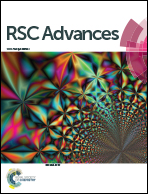CO2 adsorption on single-walled boron nitride nanotubes containing vacancy defects
Abstract
The adsorption of a CO2 molecule on the vacancy defect type of armchair (5,5) and zigzag (10,0) single-walled boron nitride nanotubes was studied based on Density Functional Theory (DFT). Vacancy defects were studied and the geometrical modifications implemented on the original hexagonal lattice yielded a considerable level of changes in the electronic properties. These changes are reflected in a greater level of CO2 reactivity in relation to the adsorption over a pristine structure. For all types of studied CO2 molecule interaction, we have found a chemical adsorption process based on binding energy. Furthermore, the CO2 adsorption takes place on the top of the vacancy region. A decomposition state was observed when the CO2 molecule interacted with the armchair nanotube with a vacancy on the nitrogen site. By comparing the values of the adsorption energies with those from other defect approaches present in the literature, we conclude that the proposed protocol presents a possible tool to develop stable and sensible carbon dioxide sensors.


 Please wait while we load your content...
Please wait while we load your content...